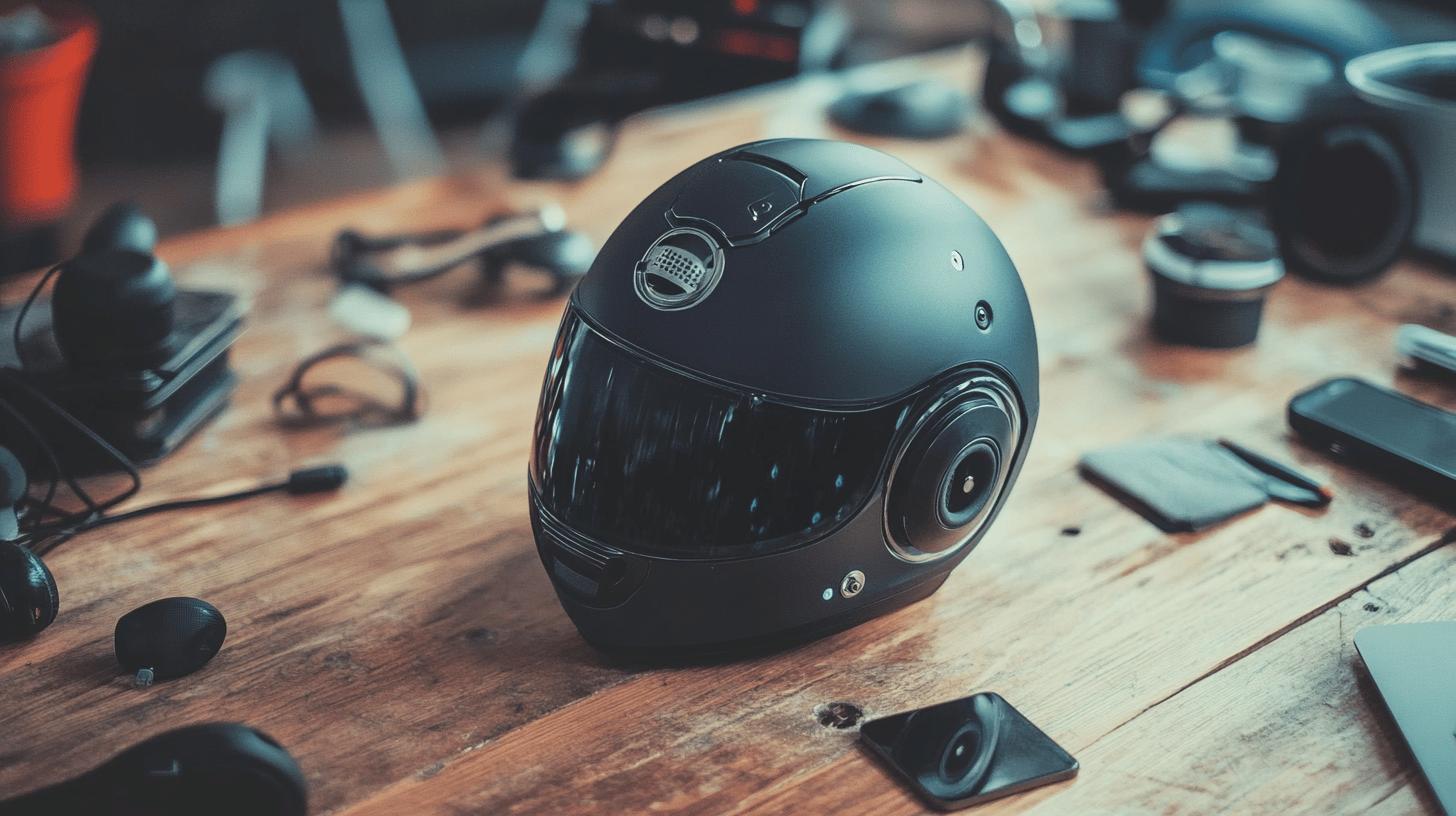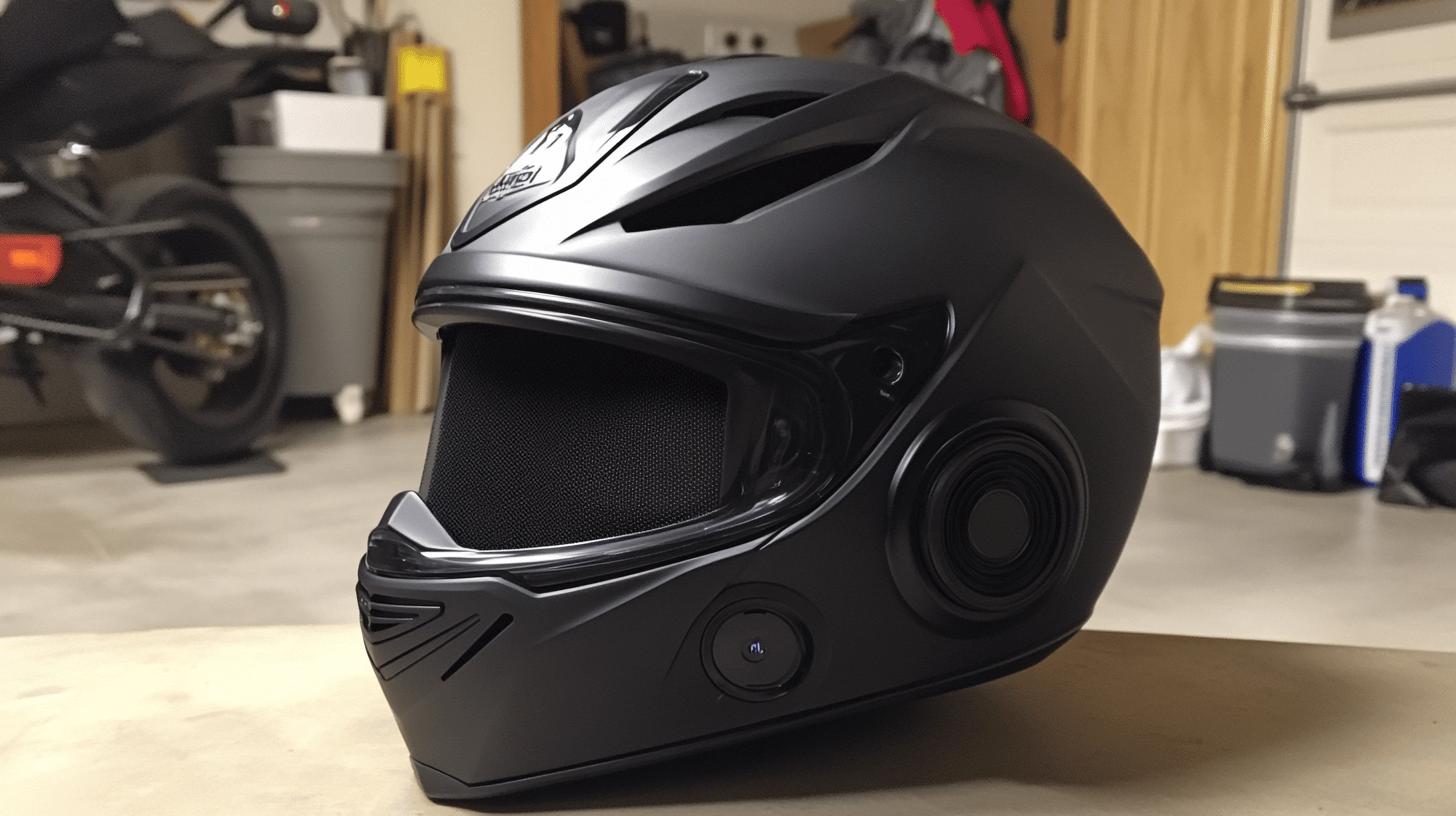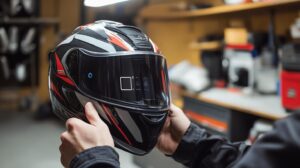Are you settling for subpar helmet audio when you're out on the open road dodging traffic? A quality Bluetooth headset can transform a mundane ride into an exhilarating journey with crisp communication and exceptional sound.
But selecting the right headset is no easy task—noise cancellation, battery life, and compatibility all play significant roles. In this article, discover the top Bluetooth headsets designed to maximize your motorcycle experience, whether you're cruising solo or leading a group.
Find out which models stand out in sound quality and feature innovation, so you can ride safer and smarter.
Top Bluetooth Headsets for Motorcycle Helmets

Selecting the right Bluetooth headset for a motorcycle helmet is pivotal for both safety and communication. With numerous options available, understanding the key features and performance of each model helps riders make informed decisions. Top-rated helmet audio systems not only provide clear sound quality but also enhance the overall riding experience.
-
Cardo Packtalk Edge: Equipped with a secure magnetic mount and 40mm JBL speakers, it offers premium sound quality and a claimed 1-mile intercom range.
-
Sena 10R: Known for superior audio quality, it features advanced noise control and dual Bluetooth modules, ensuring seamless connectivity and endless playback with swappable batteries.
-
Lexin G16: Supports up to 16 riders with a 2.8-mile range, making it a valuable choice for larger groups. Its IP67 waterproof rating ensures durability in all weather conditions.
-
FreedConn TCOM-SC: As a budget-friendly option, it uses Bluetooth Classic for a higher data rate, although its intercom is more effective for smaller groups of up to six riders.
-
Cardo Freecom 4x: Ideal for solo riders, it delivers immersive audio with 40mm JBL speakers, offering 13 hours of playback and versatile mounting options.
User satisfaction with these Bluetooth helmet options is generally high, especially concerning audio clarity and connectivity.
The Cardo Packtalk Edge and Sena 10R are praised for their sound quality and ease of use, while the Lexin G16 is favored for its extensive range and group communication capabilities. Budget-conscious riders appreciate the FreedConn TCOM-SC for its affordability without sacrificing essential features.
Moreover, the Cardo Freecom 4x stands out for solo enthusiasts who prioritize sound quality and long-lasting performance. These headsets collectively represent the best Bluetooth headset choices for motorcycle riders, balancing quality, features, and price.
Key Features of Bluetooth Helmet Headsets

Bluetooth technology has significantly evolved, now offering improved connectivity and efficiency for motorcycle helmet headsets. Bluetooth 5.3, for example, provides better range and energy management, making it an optimal choice for riders who need reliable communication over long distances. This advancement ensures that headsets maintain consistent connections, crucial for both safety and enjoyment during rides.
When choosing a Bluetooth helmet headset, several features stand out as critical. Noise cancellation is vital, as it allows riders to hear audio clearly without interference from wind and engine noise. Advanced helmet intercoms with this feature significantly enhance communication quality.
Battery life is another essential factor; headsets should offer at least 8 hours of continuous use, with swappable battery options for extended trips. Durability is non-negotiable, especially for those riding in varying weather conditions. A headset with an IP65 or IP68 waterproof rating ensures it withstands rain and dust, prolonging its lifespan and reliability.
Voice recognition technology adds an extra layer of convenience and safety to helmet headsets. By using voice commands, riders can control their device hands-free, minimizing distractions. This feature enhances ease of use, allowing for seamless operation while focusing on the road.
As these headsets incorporate more sophisticated technologies, they become indispensable tools for modern motorcyclists seeking both performance and safety.
Comparing Popular Helmet Communication Systems

Effective helmet communication systems are crucial for enhancing rider safety and convenience. They allow seamless interaction with fellow riders and access to essential information without distraction. Among the top contenders in this category are Cardo and Sena, both offering distinct advantages in terms of technology and user experience.
Cardo Communication Systems
Cardo is renowned for its superior audio quality and integration of JBL speakers, providing an immersive sound experience for riders. The Cardo Packtalk, a standout model, boasts a 1-mile intercom range, making it ideal for group rides.
Its use of Dynamic Mesh Communication (DMC) technology ensures that all users remain connected, even if one rider falls out of range temporarily. This robust connectivity, combined with high-fidelity audio, makes Cardo a preferred choice for many motorcyclists who prioritize sound clarity and reliable communication.
Sena Communication Systems
Sena distinguishes itself with its advanced Mesh 3.0 and Bluetooth 5.0 technologies, as seen in models like the Sena Stryker. These innovations provide seamless communication and significant range capabilities, facilitating clear and uninterrupted connectivity among riders.
Sena's systems are designed to handle multiple connections effortlessly, offering a versatile and user-friendly experience. The integration of these technologies enhances the overall performance, catering to riders seeking both cutting-edge features and robust communication.
-
Audio quality is paramount for clear communication and enjoyable media playback.
-
Range determines the distance over which effective communication can be maintained.
-
Technology integration, such as Mesh and Bluetooth advancements, ensures seamless connectivity.
- User experience is defined by ease of use, reliability, and the ability to integrate with other devices.
Installation Tips for Bluetooth Headsets in Helmets

Proper installation of a Bluetooth headset in a motorcycle helmet is crucial for optimal performance and safety. The process generally involves attaching the main unit, speakers, and microphone to the helmet.
A well-installed system ensures clear communication and audio quality, allowing riders to stay connected and focused on the road. Attention to detail during installation can enhance the overall riding experience, minimizing the risk of loose components or poor audio performance.
-
Attach the main unit: Secure the headset's main module to the side of the helmet using the mounting hardware provided. Ensure it is firmly attached to prevent movement during rides.
-
Position the speakers: Insert the speakers into the ear pockets of the helmet, using Velcro stickers for secure attachment. Align them with your ears for optimal sound quality.
-
Secure the microphone: Depending on the helmet type, install a boom or wired microphone. Boom mics are ideal for open-face or half helmets, while wired mics suit full-face helmets.
-
Connect the wiring: Route the cables neatly inside the helmet, ensuring they do not interfere with comfort or safety. Use provided clips or guides to maintain a tidy setup.
-
Test the setup: Power on the headset and conduct a sound check. Ensure all components function correctly and adjust positions if necessary for comfort and clarity.
Compatibility with the helmet type and size is essential for a successful installation. Different helmet designs require specific considerations, such as using boom microphones for half helmets. Always verify that the chosen headset fits well with your helmet to avoid any discomfort or compromise in audio quality.
Evaluating Audio Quality and Performance

Audio quality is crucial for motorcycle helmet Bluetooth systems, as it directly impacts both safety and enjoyment while riding. Superior sound quality ensures that riders can hear navigation prompts, communications, and music clearly, even amidst the noise of the road. This clarity minimizes distractions and enhances the overall riding experience, making it an indispensable feature for any serious rider.
Among popular brands, Cardo's 45mm JBL speakers stand out due to their 27% increased surface area, which significantly enhances sound quality. This improvement allows for richer audio with distinct highs and lows, providing an immersive experience.
In contrast, the iASUS XSound 4 offers a premium audio experience with powerful bass and clear mids and highs, making it a top choice for audiophiles. The UClear Digital HDS10X is recognized for its exceptional volume, ranking among the loudest options available, ideal for those on louder bikes or in noisy environments.
Real-world sound tests often highlight these brands for their ability to deliver consistent, high-quality audio across various riding conditions.
It's important to consider legal regulations regarding helmet speakers, as they can vary by state. Some areas may have restrictions on the use of high-volume audio devices while riding. Riders should ensure their audio setup complies with local laws to avoid potential fines or safety risks.
High-quality sound not only enhances enjoyment but also plays a critical role in maintaining situational awareness, thereby contributing to overall riding safety.
Affordable Bluetooth Headset Options

Finding an affordable Bluetooth headset for motorcycle helmets often involves balancing cost with essential features. While budget-friendly options may lack some high-end technologies, they can still provide adequate performance for most riders.
The key trade-offs typically involve audio quality, durability, and compatibility with different helmet types. Understanding these aspects helps in selecting a headset that meets basic needs without breaking the bank.
-
FreedConn TCOM-SC: This headset is known for its budget-friendly price and decent audio quality. It uses Bluetooth Classic, offering a high data rate suitable for smaller groups of up to six riders.
-
Moman H4R: Offers affordability with essential features, making it a practical choice for riders who prioritize cost-effectiveness. It provides basic audio capabilities and reliable connectivity for everyday riding.
-
Moman H4M: Slightly pricier than the H4R, this model includes additional features such as a display, enhancing usability while maintaining an affordable price point.
Balancing budget with quality and performance requires careful consideration of what features are most important for your riding style. While premium models offer superior sound and advanced functionalities, budget options like the FreedConn TCOM-SC and Moman models deliver satisfactory performance for riders who can compromise on some features.
Prioritizing essential aspects like audio clarity and connectivity can lead to a more satisfying riding experience even with affordable audio for helmets.
Final Words
Selecting the best Bluetooth headset for a motorcycle helmet involves juggling features, audio quality, and budget constraints. Riders must weigh advanced technologies, such as those in Cardo and Sena systems, alongside installation ease and audio performance.
Ensuring the headset fits individual needs for connectivity, durability, and communication is vital. Embracing the right headset not only enhances the ride but also boosts safety and comfort on the road. Adapting to advanced helmet audio systems provides a satisfying and exhilarating riding experience.
FAQ
What is the best headset for a motorcycle helmet?
A: Top choices include the Cardo Packtalk Edge with magnetic mount, Sena 10R for noise control, and Lexin G16 for group riding, offering varied features for enhanced riding experiences.
What is the loudest Bluetooth headset for a motorcycle helmet?
A: The UClear Digital HDS10X is recognized for its exceptional loudness and sound quality, providing clear audio even in noisy environments, making it a popular option among motorcyclists.
Can I use Bluetooth headphones in the helmet?
A: Bluetooth headphones can be used in helmets if designed for motorcycle use, ensuring they provide adequate sound isolation and comfort without compromising safety features of the helmet.
Can you add Bluetooth to any motorcycle helmet?
A: Bluetooth systems can generally be added to most helmets, but installation depends on the helmet's design and space availability for speakers and communication units.

Ryan Thompson is a 35-year-old sport bike enthusiast known for his adventurous spirit. With years of weekend rides and exploring new roads, Ryan brings fresh insights and firsthand experience to ProtectiveGearz. His energetic approach and passion for the latest gear make him a trusted source for riders seeking up-to-date advice.



